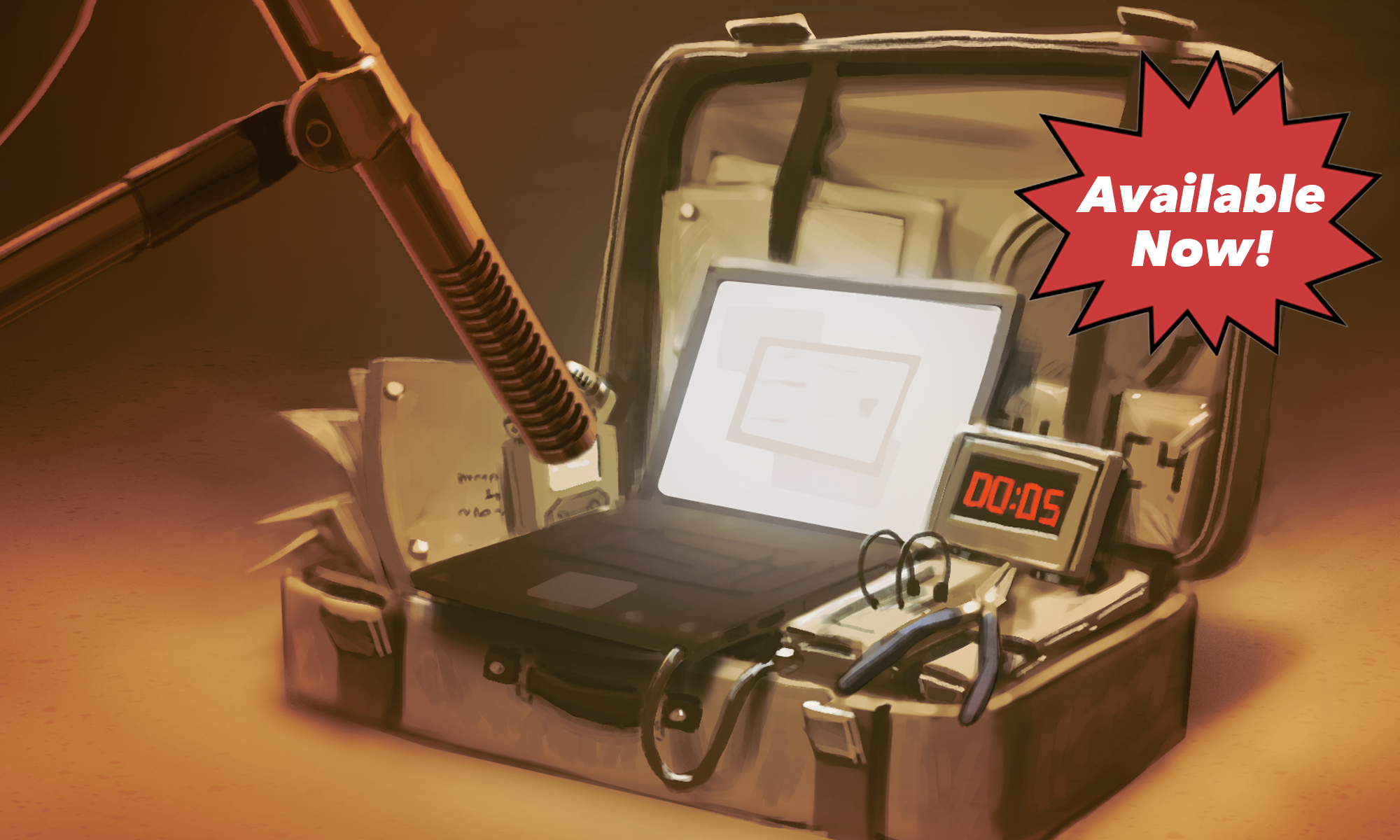What is “Audio Drama”?
This first section is the introduction to the medium, a brief history, and an in–depth analysis of the various styles of audio-only entertainment currently on the market.
Chapter 1 – Storytelling
This first chapter demonstrates how to create a story that’s told through only audio means. Every aspect of a sample story is flushed out in a unique way through a Story Workshop. The building of a story then grows from the exploration of natural character motivation. Lastly, this story section contains tips for exploring and writing onto the page, and helpful brainstorming techniques.
Chapter 2 – Storytelling through Audio
What are the things that are unique to audio-only entertainment that need to be considered when writing a story? What are other aspects that help enforce the visualization of the story? Environments and setting choices become the equivalent to “framing” in cinematography. Lastly, the section ends with the guide on how to transfer all of these ideas onto the script page formatted specially for audio-only productions.
Chapter 3 – Starting Production
Pre-production for audio entertainment consists of assembling a team and completing assets before starting production. This chapter outlines the stages in the workflow to complete an audio production, followed by the key positions and roles required to run larger productions. Contained here is a low-budget section that details tips and techniques for cutting corners and saving money, while still achieving high-end results. These are more of the “guerilla” styles of production.
Chapter 4 – Logistics
Presented here are the aspects of production that no one wants to deal with, but everyone should know. How much does everything cost? What are potential costs of production that aren’t normally anticipated? What is the range of budgets for this medium? Story rights need to be examined for royalty considerations, including detailed contracts worked out in advance. How can this audio production be funded? Kickstarter and other crowd–sourcing options can be risky and time-consuming, but also rewarding. This section covers all the aspects of the production machine, and how the process is facilitated by the fuel of capital.
Chapter 5 – Actors
Getting the right person for a role is not an easy task. How does a production handle finding that perfect actor? What sort of qualities should be scrutinized for an audio-only actor? How are call-backs dealt with? There’s a lot to consider and know ahead of time when finally casting someone for the role, including dealing with their agent, unions, payments, contracts and deal memos.
Chapter 6 – Scheduling
Audio-only entertainment is typically lengthy, and the recording times short, making scheduling actors complicated. This section goes through the process of properly formatting scripts for reports, then transforming that information into data for the schedule, as well as various considerations for recording order adjustments.
Chapter 7 – Preparing to record
There’s a lot that goes into setting up an efficient recording session. Proper actor communication needs to be established and handled appropriately. Included here are other logistical aspects that need to be considered before a recording session begins.
Chapter 8 – Recording and Directing
With pre-production complete, now the recording sessions begin, and with it the role of the director and how they influence the performances. There are various ways in which a director can warm up the actors and help prepare their voice. It’s part of the director’s responsibility as well to set up a relationship and workflow on the recording stage, knowing how to operate and perform in the space with other actors. An audio-director needs to be actively listening and participating, keeping up the energy and momentum for continuity. They are also the guide, helping actors switch to various places in the story while giving them the needed information to know what’s going on in their upcoming scene.
Chapter 9 – The Tech Side of Recording
Recording is complicated. There are many components involved with perfecting the capture of sound-neutral performances to ensure the most accurate aural representation, while minimizing the additional amount of noise and artifacts. There are various pieces of hardware covered in this section, and also low-budget options as well. Each session for an audio drama is set up uniquely, to optimize the workflow through post–production.
Chapter 10 – Post–Production
The longest and most involved part of audio drama production is Post, and this chapter’s length reflects that. Every step of the workflow is covered to ensure a smooth process along with how to utilize specific team members. There’s also an inherent deeply artistic side to sound design: the clarity and use of sound to build an aural image and how Foley can be used to connect the audio world with the audience.
Chapter 11 – Publishing
How to be heard is the constant struggle. This chapter covers the various platforms to launch the project, where to host them, dealing with marketing/social media, and the community as a whole. An audio drama needs listeners to be successful, and these are the steps to get started in reaching an audience.
Chapter 12 – Theater for the Mind
As the medium grows, so too does the need to start finding ways to promote quality over quantity. The movement involves special branding control for productions that focus on aspects to create vivid aural images, and truly creates a theater in the mind of the listener in being part of that world.
Additional Resources: Additional pieces of information regarding an equipment index, along with key concepts and phrases are included.

